If you look at the new 2019 range of road bikes, you can’t avoid speaking about “aero.” We have decided to pit the newest and hottest aero bikes against each other. What can aero bikes do and what are their limits? Do we need aero on a group ride with our mates? We set out to answer these and many other aero related questions.
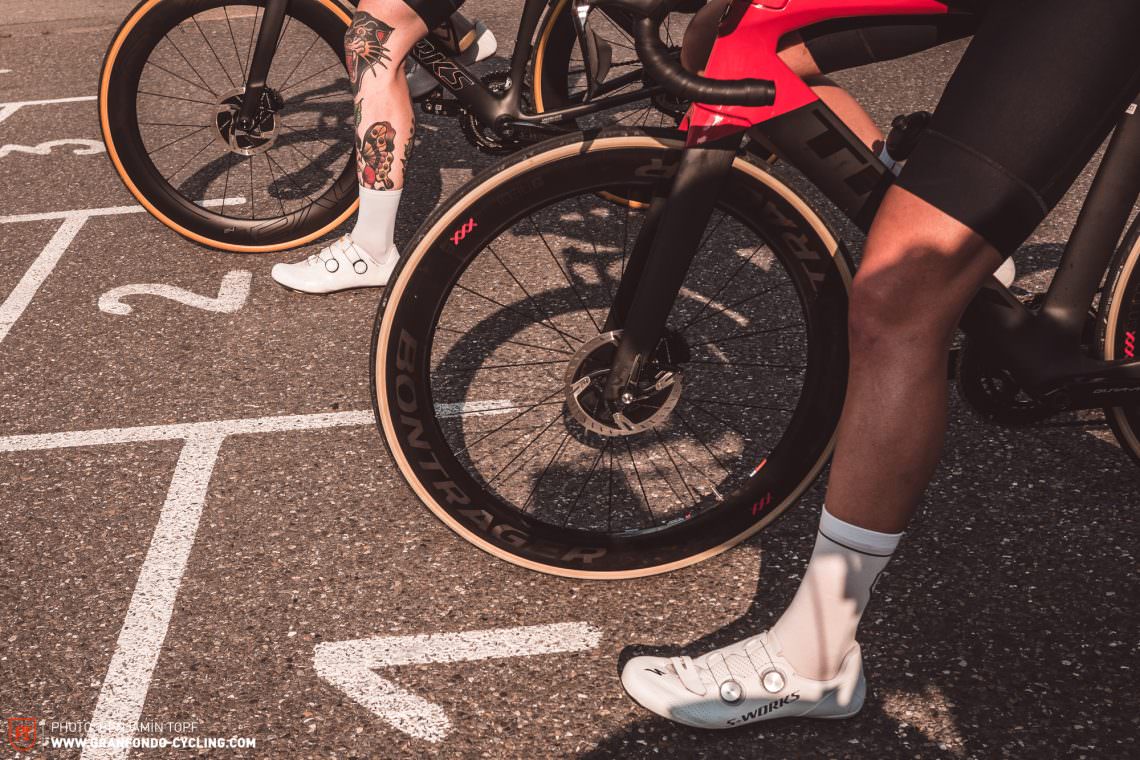
The legendary victory of Greg LeMond in 1989 was a turning point in aerodynamics when he snatched the Tour de France victory in the final individual time trial on the Champs-Élysées. If the topic had been ignored before, the cycling world suddenly realised what a difference a simple time trial bar can make.
Today, it’s impossible to imagine professional cycling without “aero”, and even hobby cyclists and cafe racers are finding enjoyment in oversized aero tubing and deep aero wheels. You could almost think that aerodynamics has become the core of bike design. But you should keep in mind that there is much more to being fast than having the most streamlined aero bike.
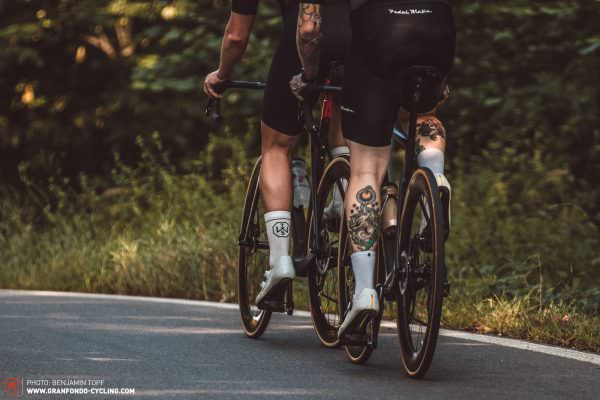
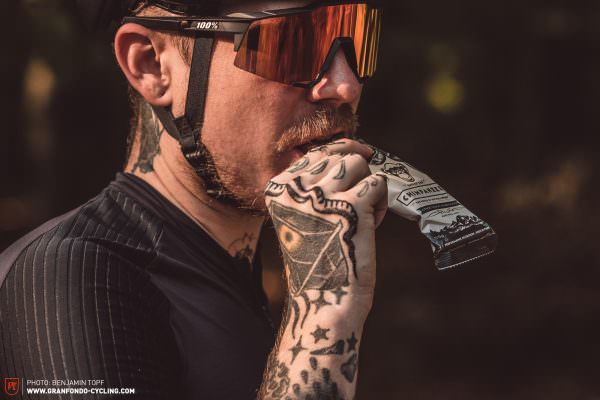
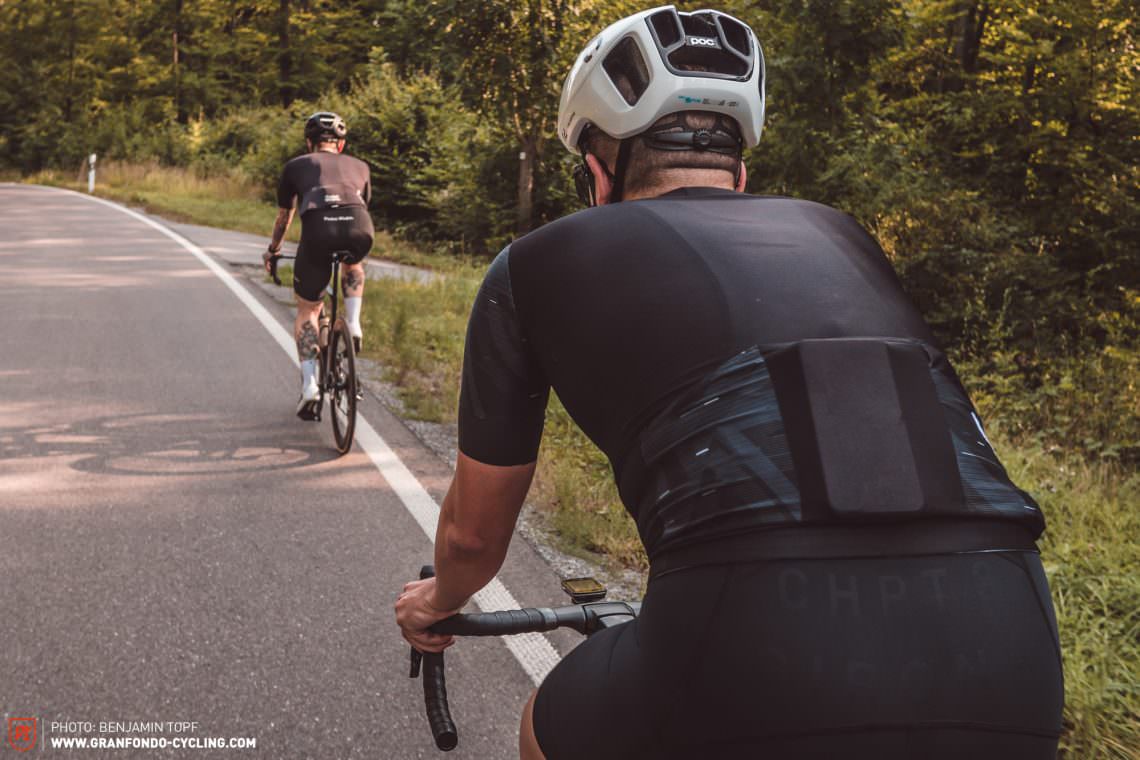
Anyone who has ever held their hand out of the window of a moving car knows what it feels like when wind resistance increases exponentially with speed. At twice the speed, the wind resistance is four times as high. There is nothing we can change about the physical laws to be more aerodynamic, but two aspects can be improved: the air-flow around the bike and the rider, and the frontal surface area of the rider.
It is this air-flow – the so-called cd value or drag coefficient – that bike engineers work on to make a bike more efficient and aerodynamic using optimised tubing shapes, internally routed cables and specially designed trailing edges. You should keep in mind, however, that a reduction of aerodynamic drag brings only minor advantages compared to a reduction of the frontal surface area exposed to wind. More than 75% of wind resistance is accounted for by the rider.
What does that mean? Reducing the frontal surface area is the most efficient and probably the cheapest way to become faster. How do you do that? An aerodynamic position on the bike is key in terms of speed, and a gilet fluttering in the wind costs far more than we can ever gain with an aero bike.
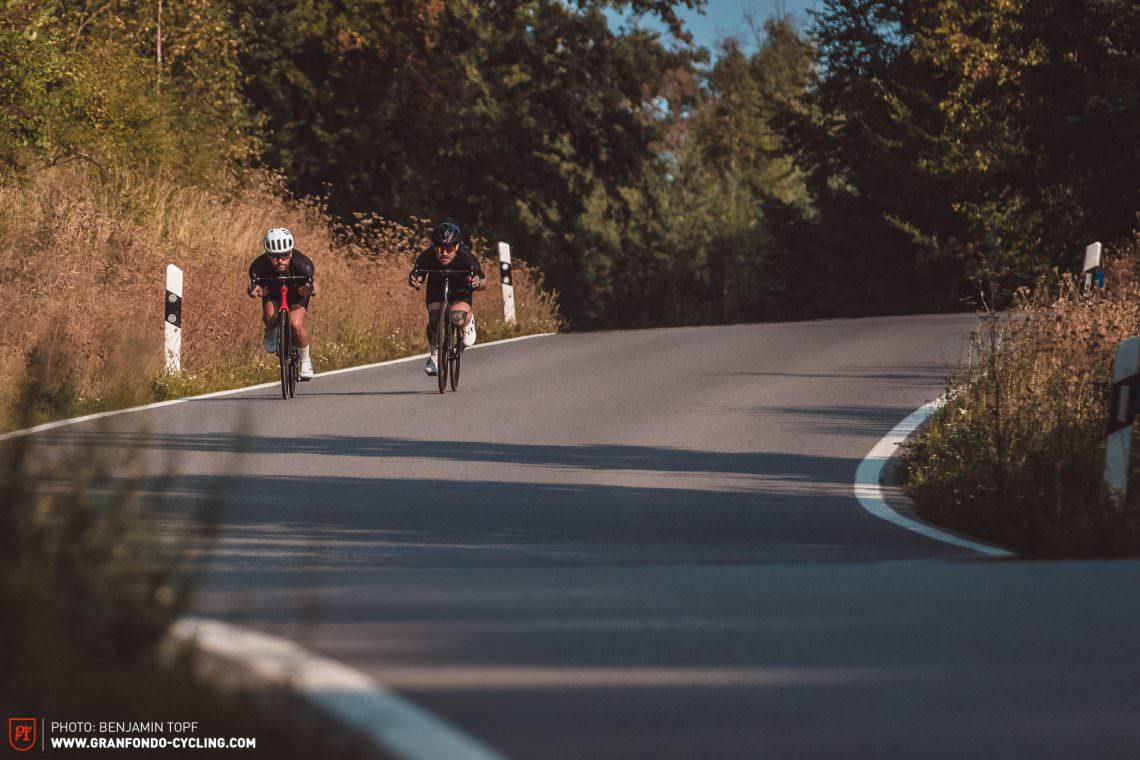
What to look out for on Aero bikes
“Aero is everything!?” Does it really only take good aerodynamics to be fast? Of course not! We remember when, on the hunt for good reviews, manufacturers were in their labs building stiffer and stiffer bikes that at some point became almost unrideable. Are we now seeing the same phenomenon with a new focus? Looking at some manufacturers, it seems like it. This is what it really takes to be fast:
Handling
Anyone who is fast on the straights, but loses valuable time in every turn and technical descent, will quickly lose out. On paper, the geometries of the bikes differ only marginally, as, among other things, they were all designed according to UCI regulations. On the road, however, it quickly becomes clear whether or not a concept works and there are huge differences! Depending on the rider’s ability, a safer or more comfortable bike will lead to faster times than the most aerodynamic bike out there.

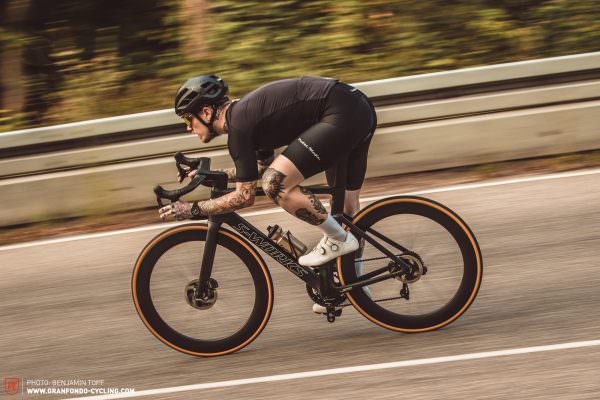
Safety
Whether it’s the finish sprint, a winding downhill or an easy group ride – you want to have complete faith in your bike at all times. Braking performance, composure, and precise and balanced handling make for a good baseline. A certain forgiving quality, which allows for small errors and smoothes out uneven roads, helps you keep the upper hand, or the “rubber side down”. If any of these aspects are missing, you will get worn out a lot quicker, be tense on the bike and face-plant sooner than you would like. Your wheels also play a major role – there are considerable differences in the air-flow around aero wheels. While one wheel remains controllable and stable in strong crosswinds, other wheels with identical rim depths will have sweat beading on your forehead.
Comfort
Regarding comfort, we are talking about relative comfort compared to aerodynamically optimised race bikes like the Canyon Aeroad Disc or the 3T STRADA. Due to the stiff tube shapes alone, a true aero bike will struggle to achieve a level of comfort comparable to something like the Specialized S-Works Tarmac. In this category, you won’t find a high level of comfort for hours of cruising over rough terrain, but the possibility to maintain an efficient and aerodynamic position that you can hold for a long time.

Design and quality
For a test field of bikes which all exceed € 10,000, the expectations are correspondingly high. Besides the performance, the design and quality have to be spot on. Not only the aesthetics play an important role, but also integration, smooth transitions, as well as what it sounds like and the quality of workmanship. Those who celebrate their pre-ride-espresso and pay particular attention to the details when oiling their beards and adjusting the height of their socks will be reluctant to compromise on the style of their new aero-racer.

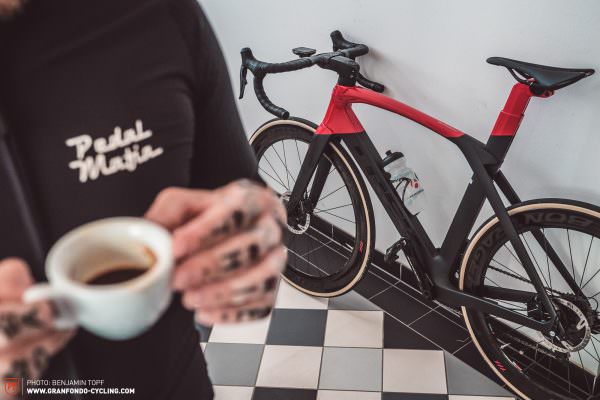
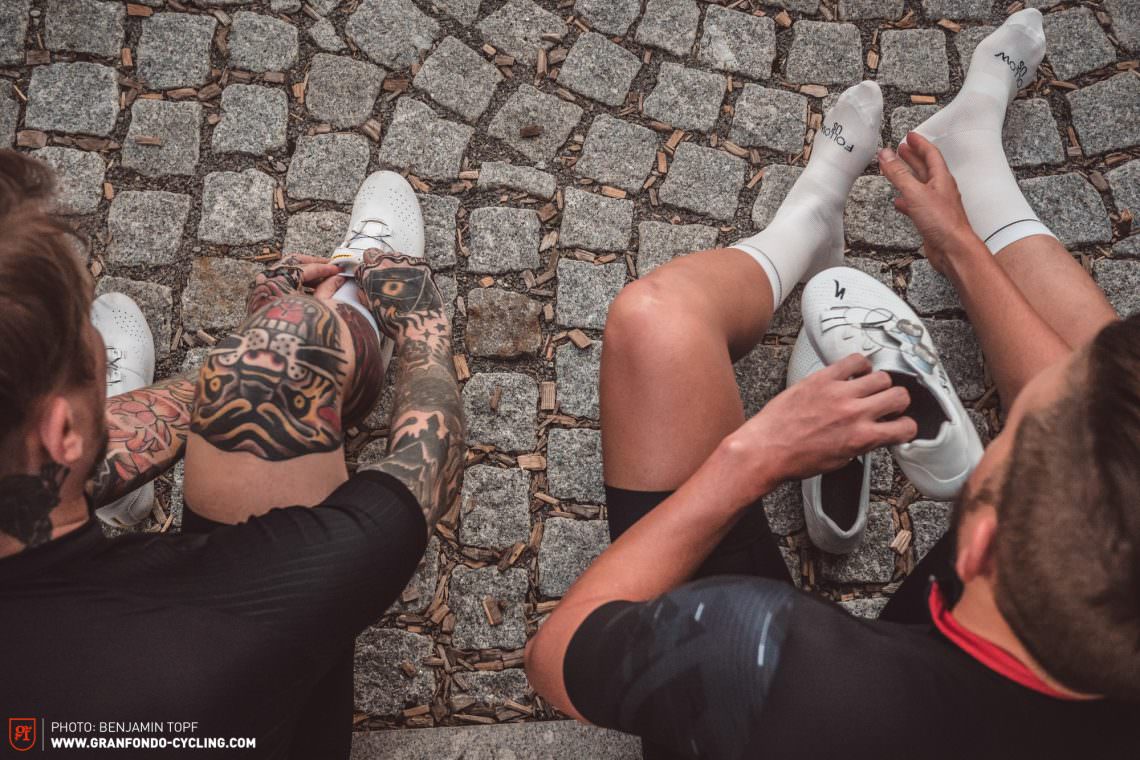
The test field
For the test field of our aero bike group test, we took a closer look at the latest creations of the big players and put them head to head. We would have liked to have included the latest offspring of the exclusive Swiss brand BMC, but unfortunately, there was no test bike available. You can find a detailed review of the BMC Timemachine 01 Road ONE on our website.
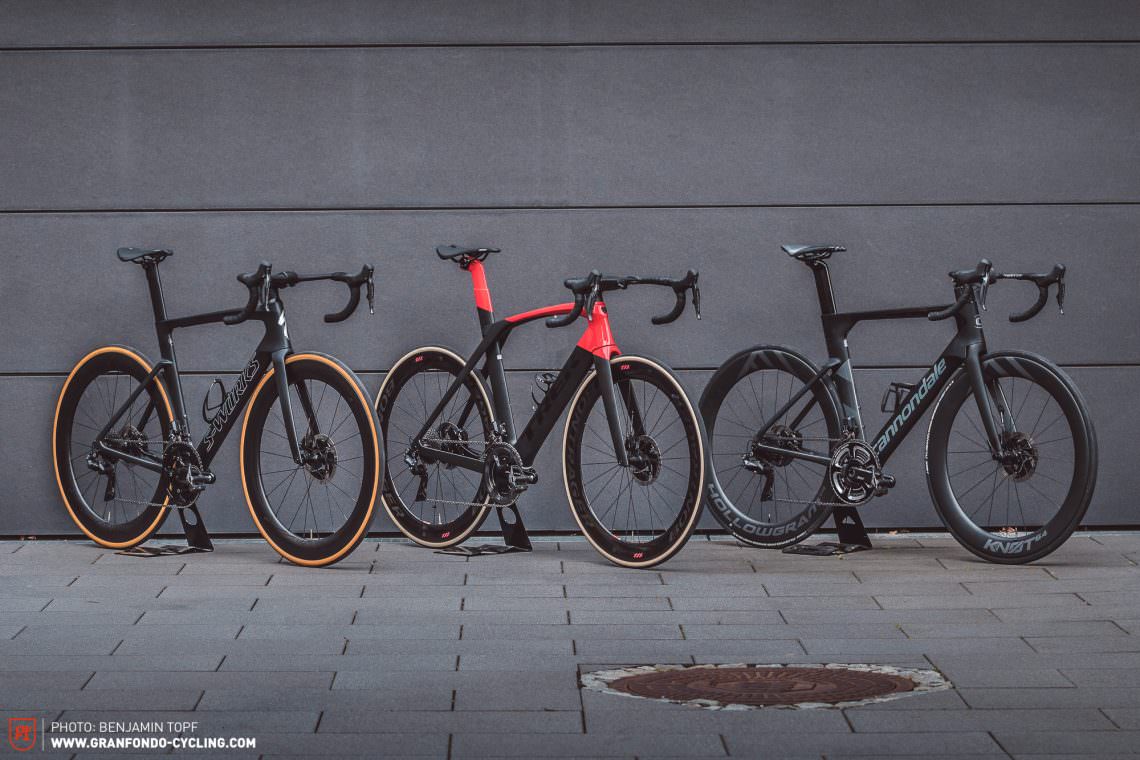
| Bike | Tires | Drivetrain | Weight | Price |
|---|---|---|---|---|
| Cannondale SystemSix Hi-MOD DURA-ACE Di2 | Vittoria Rubino Speed, 700 x 23C | Shimano DURA-ACE Di2 | 7.66 kg | € 10,499 |
| Specialized S-Works Venge 2019 | Specialized Turbo Cotton, 320 TPI, 700 x 26 mm | Shimano DURA-ACE Di2 | 7.19 kg | € 10,999 |
| Trek Madone SLR 9 Disc 2019 | Bontrager R4 320, 320 TPI, 700 x 25C | Shimano DURA-ACE Di2 | 7.63 kg | € 11,499 |
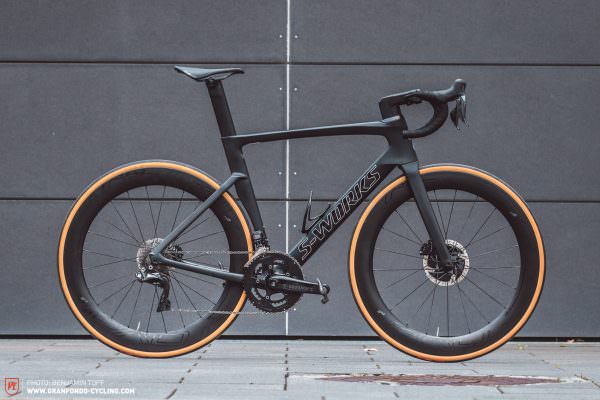
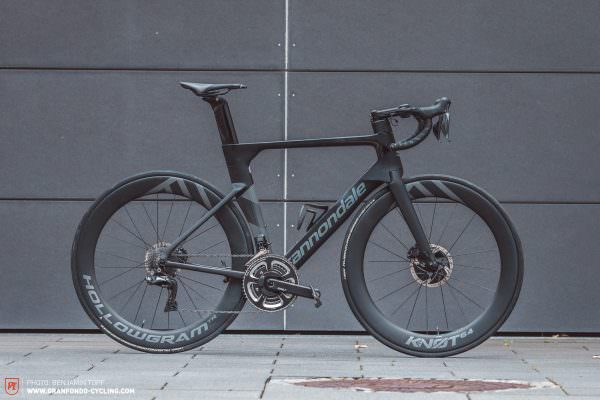
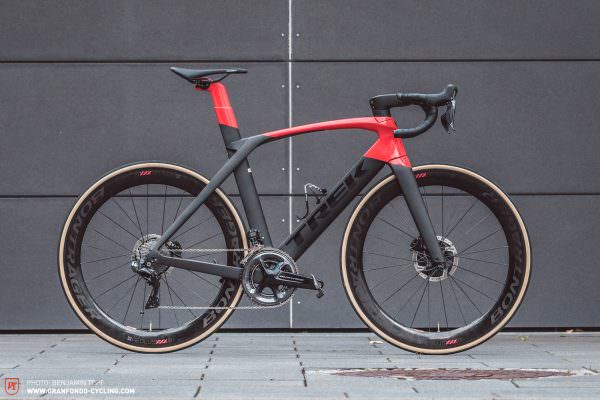
Tops and Flops
Often small details can make a huge difference: seamless integration, first-class ergonomics and carefully selected parts. Easier said than done – here are some of the tops and flops from this grouptest.
Tops
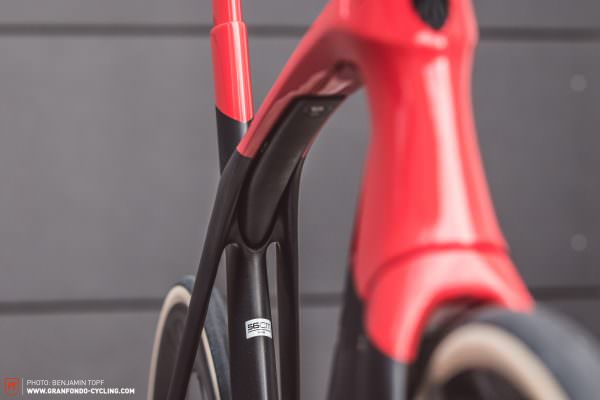
Thanks to the IsoSpeed damper, the Trek Madone is a miracle in aero comfort

With Cannondale’s Speed Release, you can change your wheels as fast as the pro’s do
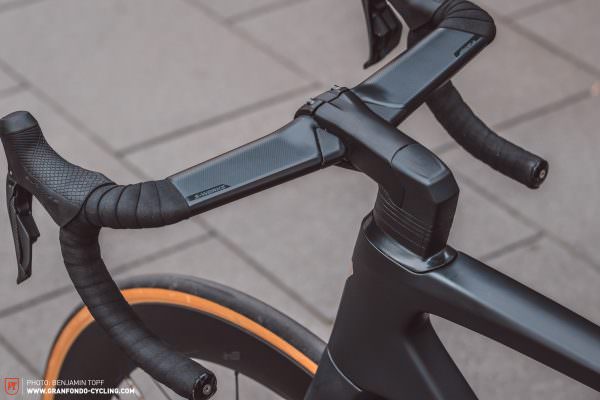
Trek and Specialized show how cockpits ought to be done, offering excellent ergonomics and integration fully compatible with standard handlebars
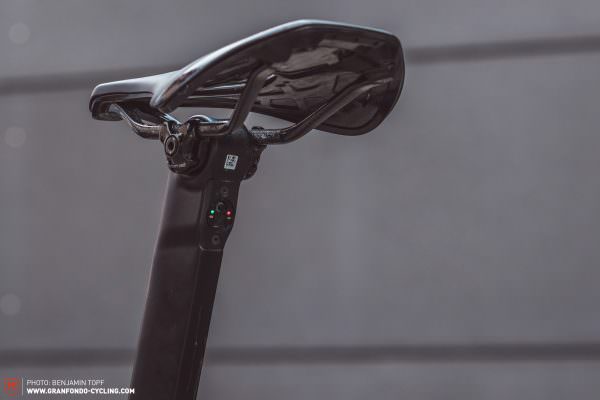
A beautiful solution: Specialized hides the Di2 Junction box in the seat post.
Flops
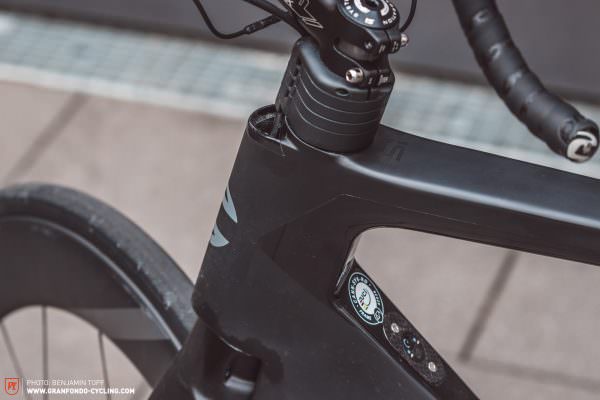
The cables on the Cannondale limit the steering angle, which means you might damage the cables if you turn the wheel too sharply
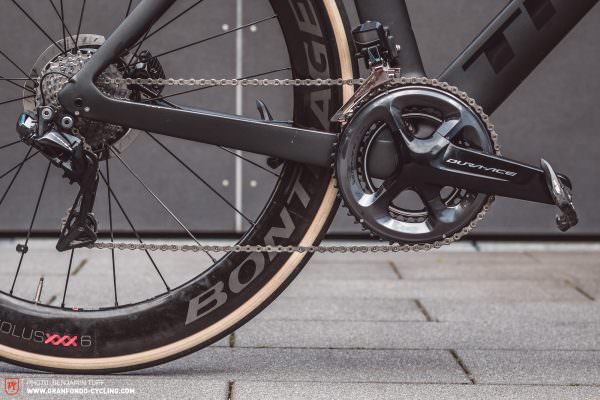
The most expensive bike in the test field is the only one without a power meter. We would like to have seen better from the Trek Madone.
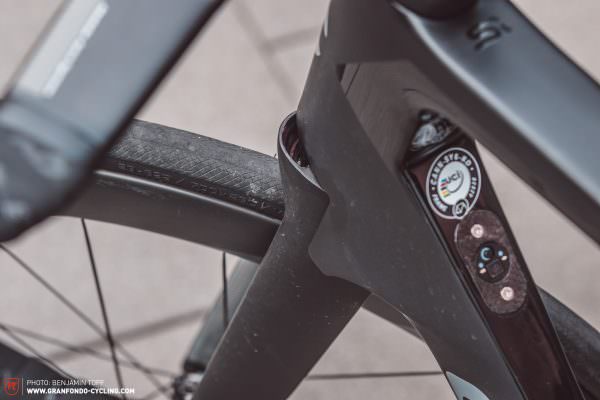
The transitions at the head tube of the Cannondale lack finesse, leaving unsightly gaps that we wouldn’t have expected
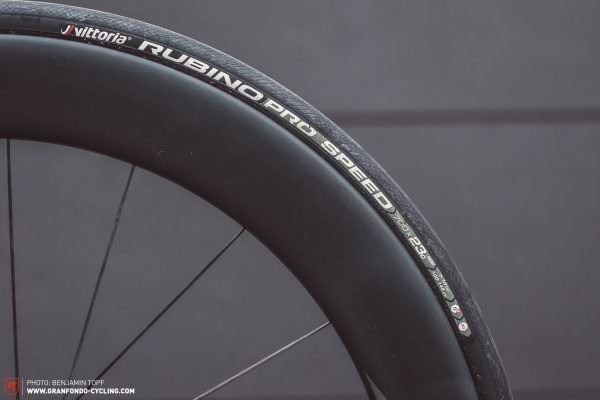
The Vittoria Rubino Pro on the Cannondale do inflate wider than 23 mm, but combined with the stiff wheelset they’re still far from comfortable
Insights
Integration is a top priority. All bikes in the test field show a very high degree of integration – from internally routed cables, hidden Di2 junction boxes, hidden seatpost clamps to integrated GPS mounts. However, you’ll quickly realise that integration shouldn’t come at the cost of accessibility in servicing the bike and everyday practicality. If you have to be a professional mechanic to raise the saddle, something definitely went wrong in the design of the bike. Aero bikes of the past, in particular, had some catching up to do here. The new generation of aero bikes are much more practical.
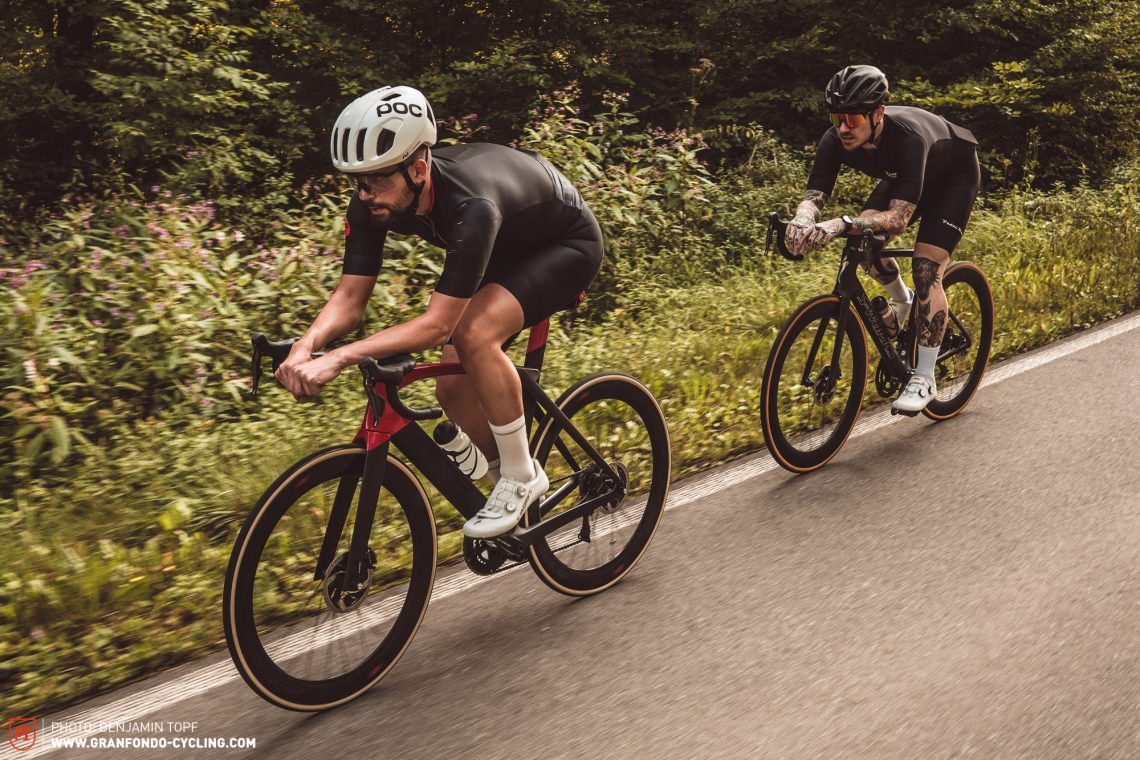
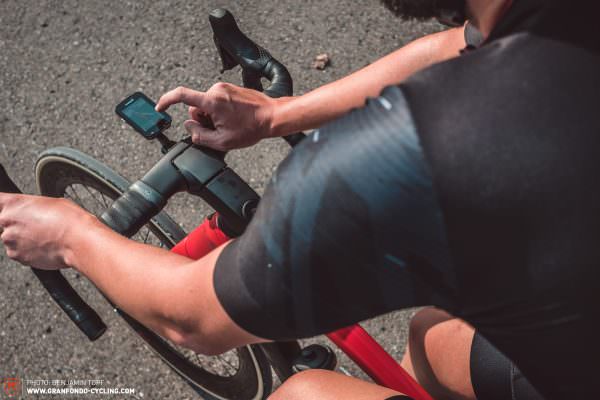

Serviceable only by a professional mechanic? The high degree of integration together with the trend towards hydraulic disc brakes makes it increasingly difficult for home-mechanics to work on their bike themselves. Manufacturers still have a long way to go, especially with regard to the accessibility of the cables and hoses, maintenance in case of faults in the electronic drivetrain and changing the brake fluid. So we hope to see more clever solutions like the flap under the bottle cage on the Trek Madone.
Efficiency and stiffness. All bikes in the test field are highly efficient in acceleration and the one-piece cockpits are also much stiffer than conventional handlebar-stem combinations. Stiffness comes at the cost of comfort, but Trek manages to keep their aero frames comfortable thanks to an additional damping element – the IsoSpeed damper which decouples the seat tube from the frame.
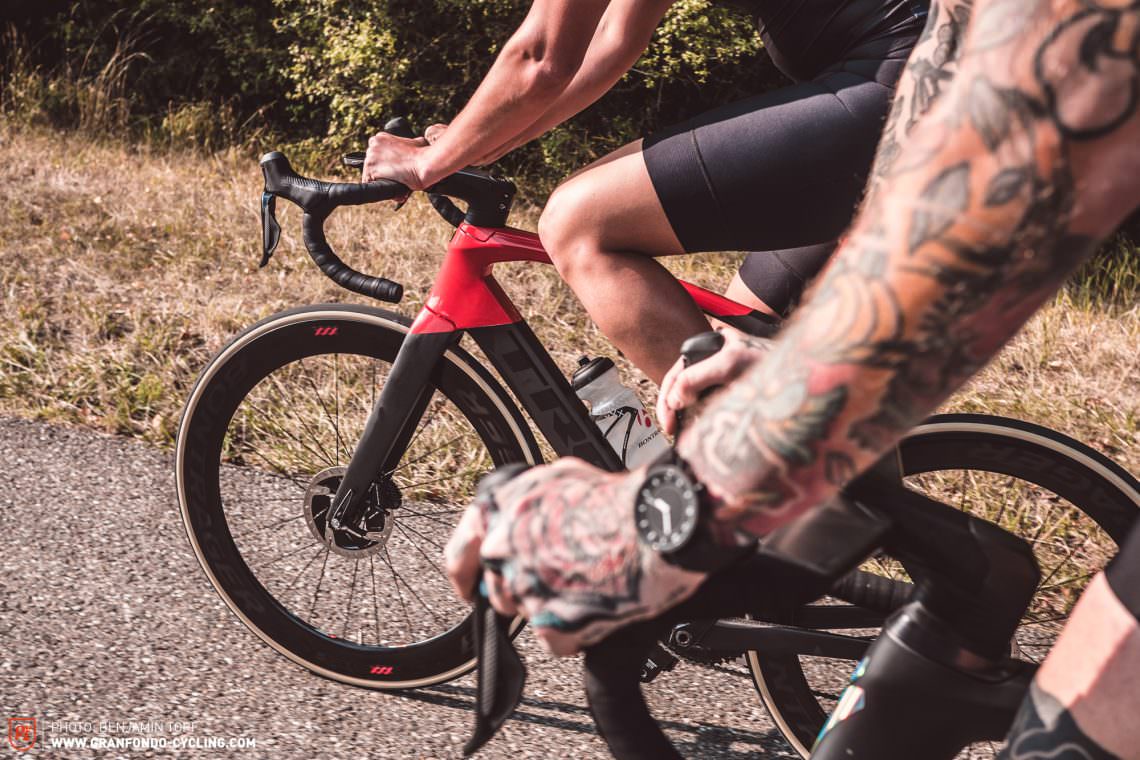
Compact rules! All test bikes come specced with compact versions for their cranksets as well as for the drop on the handlebars, which is a much better choice for mere mortals like us. A semi-compact crankset offers an excellent compromise between top speed and climbing ability. A more compact handlebar with a shallower drop reduces the difference between the hoods and the drops, making riding in the aerodynamic position much more comfortable for non-professional riders.
Music to our ears. The oversized tubes on the frames of aero bikes are not only streamlined but also make for a great sound box. Besides bumps in the road and the possibility of creaking being much louder, a surprise attack on the home sprint is almost impossible, as the reverberations in the frame announce your approach. Fast, loud… and pretty damn cool!

Aero but safety first. The aero-tuck, which we repeatedly see in the professional peloton, may be fast, but you should never lose sight of the danger involved. Bumps in the road or other surprises can end badly if you don’t get back on the saddle quick enough. So, what’s the alternative? Head down and legs pressed against top tube; that way you’ll be almost as fast, but in full control. A torn jersey and blood-covered legs are “epic shit” on TV but definitely not worth trying yourself.
Discs rule! Not so long ago they were hotly contested in the professional peloton, today disc brakes have become indispensable. Stock high-end groupsets guarantee great braking performance in all situations. Also, the rigid frames provide a good basis for absorbing the braking forces without feeling nervous. Nevertheless, balance is important and we still prefer a 160/140 mm rotor setup for a good distribution of braking power to avoid locking the rear wheel.
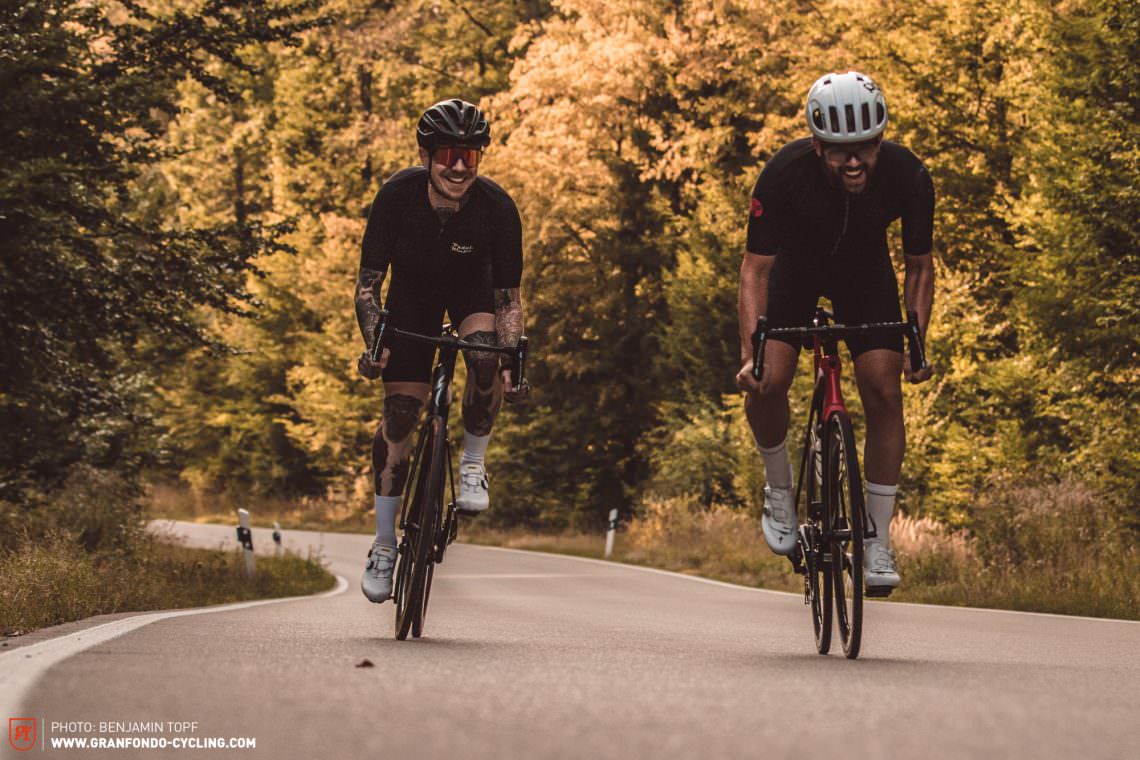
The aero bikes head to head
All three contenders promise to be extremely aerodynamic, come with almost identical geometries, take integration to a new level, all cost over € 10,000 and yet couldn’t be more different. The most agile and in a professional’s hands extremely fast Specialized Venge is the lightest and quickest in the test but requires an experienced and capable rider. The Cannondale brings new ideas and muscular forms, but it lacks proportion and another essential component: comfort. Both the Specialized and the Cannondale come standard with power meters – a big plus for the data freaks among us. Ultimately, however, it takes a perfect all-round package of comfort, safety and stability in order to be aerodynamic and fast for the long haul. And that’s exactly what the Trek Madone SLR 9 Disc 2019 can do. It’s a clear “best in test” for the comfortable, technological wonder!
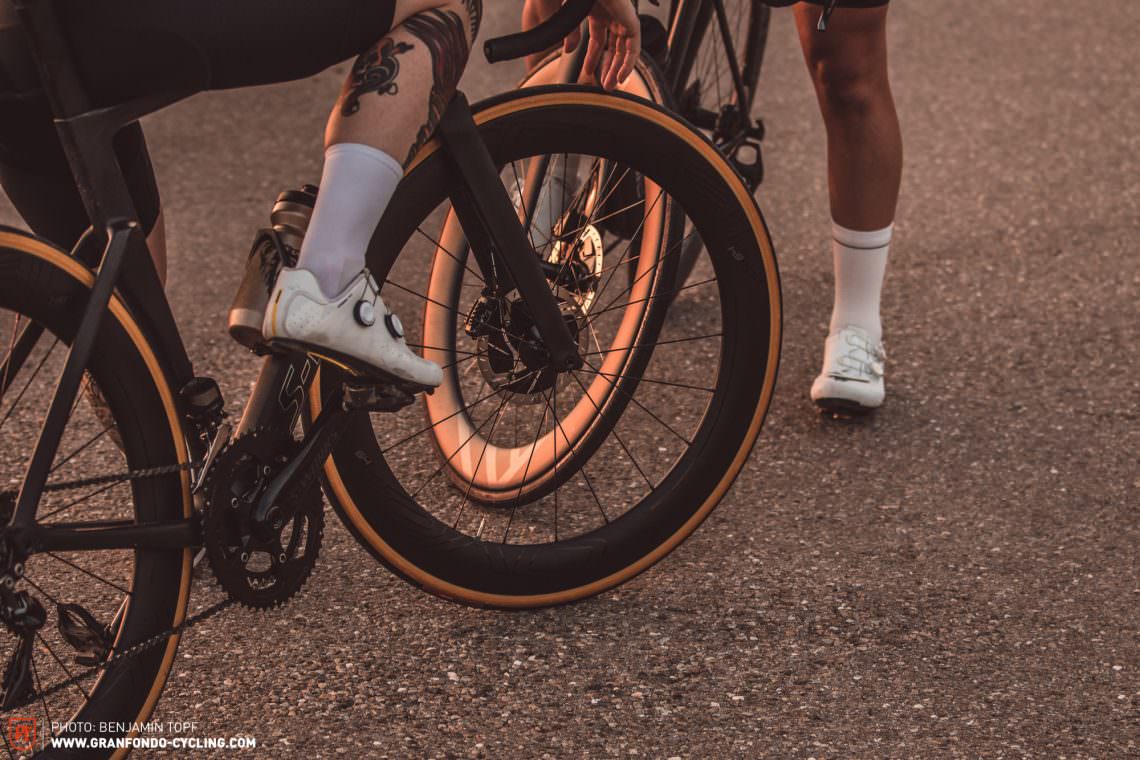
Conclusion
The new 2019 Trek Madone SLR 9 Disc isn’t only the fastest aero race bike, but also the best choice for mortals like us. It offers an awful lot of speed, a ton of design and tech features to geek out on, and it’s surprisingly comfortable.
Despite the aero trend, you shouldn’t let it drive you crazy. What are you going to sacrifice for aerodynamics?

If you can, you can – and that’s why we hit our hometown streets with the Trek Madone while enjoying the freedom of our vest blowing in the wind. If you really want to get aero (even if you’re not taking part in an individual time trial on the Champs-Élysées like Greg LeMond), you know what matters. Aerodynamics doesn’t replace training – this doesn’t only apply to your muscles, but above all to flexibility: may the smartest win!
All bikes in test
Cannondale SystemSix Hi-MOD DURA-ACE Di2 | Specialized S-Works Venge 2019 | Trek Madone SLR 9 Disc 2019

This article is from GRAN FONDO issue #010
GRAN FONDO Cycling Magazine is published in a digital app format in both English and German. Download the app for iOS or Android to read all articles on your tablet or smartphone. 100% free!

Did you enjoy this article? If so, we would be stoked if you decide to support us with a monthly contribution. By becoming a supporter of GRAN FONDO, you will help secure a sustainable future for high-quality cycling journalism. Click here to learn more.
Words: Photos: Benjamin Topf










[…] an edge when it comes to aerodynamics, this comes at a price. Gran Fondo Cycling articulated this best last year in a roundup stating, ” The most agile and in a professional’s hands extremely fast Specialized Venge is the […]